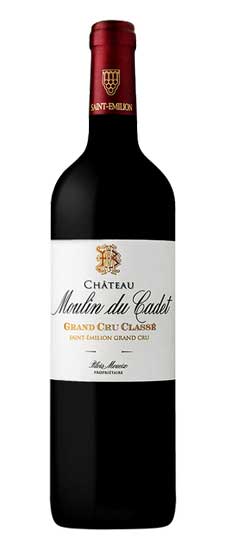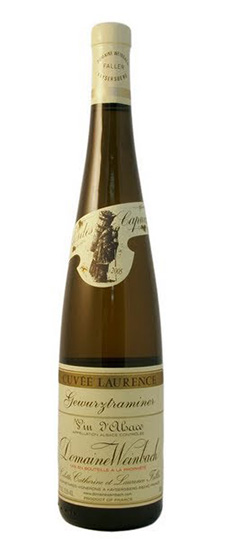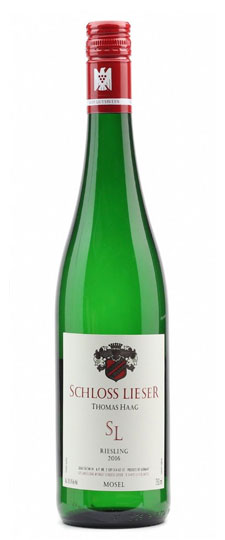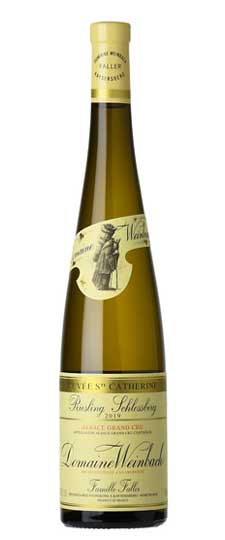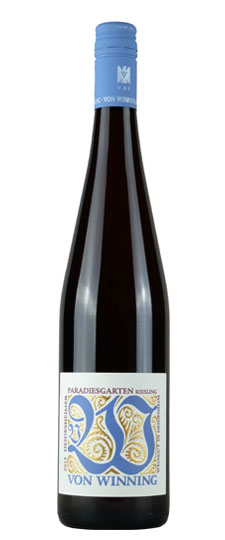Wine Score
Jancis Robinson
When to drink: 2011 to 2015
RS 25 g/l. Roses, apricots, not at all overdone, great restraint. Long finish, slightly grippy but that balances nicely with the sweetness and freshness. Richard Hemming MW
Tasted: 20-Jul-2011
Grape Variety
Gewurztraminer Wine
Gewurztraminer (Gewürztraminer in German-language areas) is a pink-skinned grape variety that produces some of the world’s most distinctive aromatic wines. Its perfumed style is somewhat polarizing; fans adore its intense floral scent and sweet-spice flavors, while detractors lament its low acidity and lack of subtlety.
Gewurztraminer’s parentage is hard to trace. Modern research suggests that it is the aromatic mutation of Roter Traminer (Savagnin Rose), and therefore part of the ancient Savagnin-Traminer group of grape varieties, which have identical or near-identical DNA profiles. As such it is hard to locate a precise area of origin, though Savagnin is thought to have originated in what is now southwest Germany.
Gewurztraminer Grapes
 Literally translated, Gewürztraminer means “spiced Traminer” (Traminer Aromatico in Italian). The second part of the word suggests the grape may have origins in Tramin (Termeno) in the Alto Adige region. But while documents mentioning wines from Tramin date back to the 1200s, the spicy variant of the Savagnin Rose grape did not exist in the region until the 19th Century. Recent studies suggest that German growers of the Gewürztraminer/Savagnon Rose grape created the confusion by naming the variety after the wines of the Tramin region, which by the 1400s were attracting international acclaim.
Literally translated, Gewürztraminer means “spiced Traminer” (Traminer Aromatico in Italian). The second part of the word suggests the grape may have origins in Tramin (Termeno) in the Alto Adige region. But while documents mentioning wines from Tramin date back to the 1200s, the spicy variant of the Savagnin Rose grape did not exist in the region until the 19th Century. Recent studies suggest that German growers of the Gewürztraminer/Savagnon Rose grape created the confusion by naming the variety after the wines of the Tramin region, which by the 1400s were attracting international acclaim.
The best examples of Gewurztraminer are generally regarded as being from the grand cru vineyards of Alsace. It could even be argued that Alsace is the spiritual home of Gewürztraminer, despite the fact that it is not its ancestral home and that Gewürztraminer accounts for less than one-fifth of vineyard area in the region.
Gewürztraminer, as we know it today, arrived in Alsace from the Pfalz region – closer than most wine regions of France. The rich clay soils present in Alsace proved an ideal environment to produce full-bodied Gewürztraminer wines. The richness of dry, late-harvest, (vendage tardive), and botrytized very sweet (Sélection de Grains Nobles) Gewürztraminer wines in Alsace set the benchmark for which the variety is judged, and it is one of the grape varieties along with Riesling, Muscat and Pinot Gris which can be produced at Alsace Grand Cru level.
The primary aromatic descriptors used to define Gewürztraminer are typically lychee, rose petal, Turkish delight, tropical fruit and perfume. On the palate it is marked by its full texture, low acidity, stonefruit (mango, peach and apricot) and spicy (ginger and cinnamon) flavors.
Somewhat confusingly in Australia, the variety is often referred to as simply Traminer. The confusion is amplified by the recent discovery that a small amount of Savagnin Blanc – aka Traminer – is grown in the country, having been misidentified as Albarino for many years prior to 2009.
Notable examples of Gewürztraminer produced outside Alsace are from New Zealand, Oregon, Washington, Germany and northern Italy. It is also made under a wide number of synonyms in eastern Europe, but these wines are rarely exported.
Synonyms include: Traminer Aromatico, Traminer Musqué, Traminer, Gentil Aromatique, Savagnin Rose Aromatique.
Food matches for Gewurztraminer include:
Stir-fried pork with pickled plum (dry)
- Crayfish laksa (dry)
- Pannacotta (sweet)
- Enjoy this video about Gewurztraminer, from Sonoma Valley’s Kunde Family Estate.
Region
Clos des Capucins Wine
Clos des Capucins is one of the most respected vineyards in Alsace, with a long and distinguished history. The vineyard is a monopole of Domaine Weinbach, established in 1612 by the Capucin monks who built the clos. The Weinbach title was chosen by the monks for its symbolism. It means ‘The Stream of Wine’, a reference to the brook flowing through the estate en route from the lower Vosges to the Rhine.
Domaine Weinbach – and therefore the Clos des Capucins – is now owned by the Faller family. They acquired it in 1898 after it was seized as national property during the French Revolution. The clos has remained the domaine’s headquarters and flagship vineyard.
Clos des Capucins
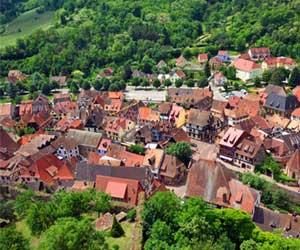 Kaysersberg, home to the Clos des Capucins
Kaysersberg, home to the Clos des Capucins
Not all of Domaine Weinbach’s wines come from the Clos des Capucins (it covers only 12 acres/5ha). The domaine also has vineyards within the Furstentum and Mambourg Grand Crus, just to the east, and in the Schlossberg Grand Cru on the hillside immediately above the clos. The Cuvee Theo wines, named after Theo Faller, are Riesling and Gewurztraminer wines produced exclusively from Clos des Capucins grapes.
The first references to the Capucin monastery here date back to the ninth century, although it is uncertain whether wine grapes were being grown in the clos as long ago as that. Whenever the first cuvees were made, the Clos des Capucins has secured a place in Alsace’s wine history.
Producer Notes
About Domaine Weinbach
Domaine Weinbach is a leading wine estate in the Alsace region. It is named after the “wine brook”, a small stream that runs through the main property, which is a former monastery near Kayserberg. The estate is known for its wines made at varying levels of sweetness from Riesling, Pinot Gris, Pinot Blanc, Sylvaner, Gewürztraminer and Muscat.
Domaine Weinbach
 Unusually for the region, Weinbach only uses estate-grown grapes. It has holdings in four nearby Grand Cru vineyards on the slopes of the Weisbach Valley – Schlossberg, Furstentum, Mambourg and Marckgrain. Weinbach also owns the famous 5-hectare (12-acre) monopole, Le Clos des Capucins, which surrounds the cellars just below Schlossberg, and the Altenbourg vineyard adjacent to Furstentum.
Unusually for the region, Weinbach only uses estate-grown grapes. It has holdings in four nearby Grand Cru vineyards on the slopes of the Weisbach Valley – Schlossberg, Furstentum, Mambourg and Marckgrain. Weinbach also owns the famous 5-hectare (12-acre) monopole, Le Clos des Capucins, which surrounds the cellars just below Schlossberg, and the Altenbourg vineyard adjacent to Furstentum.
All of the estate’s 28ha (69 acres) of vineyards have been farmed biodynamically since 2005 and are certified by Ecocert and Demeter. After a gentle, gradual pressing, the juice is slowly fermented in old oak vats using indigenous yeasts.
For several decades the estate was run by Colette Faller and her daughters, winemaker Laurence and sales director Catherine. Laurence died tragically young from a heart attack in 2014, and her mother passed away the following year. Catherine Faller now runs the estate with her sons.

